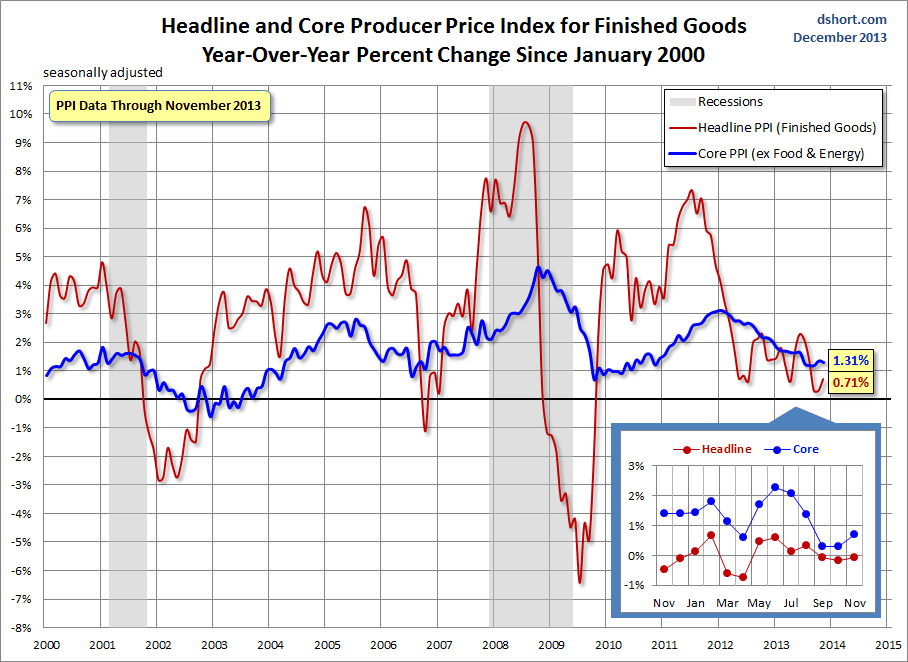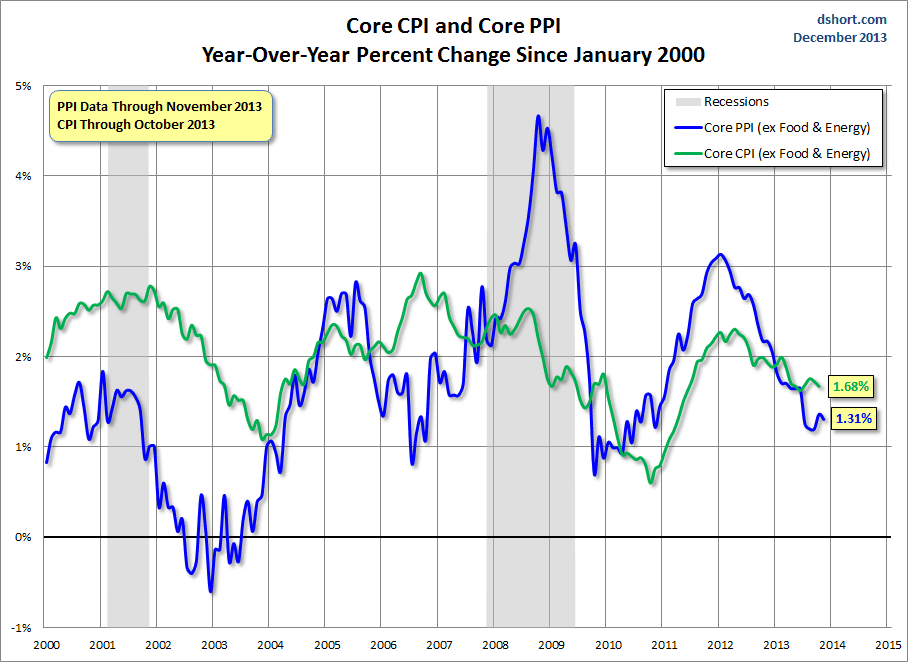Friday's release of the November Producer Price Index (PPI) for finished goods shows a 0.1% month-over-month decline, seasonally adjusted, in Headline inflation. Friday's data point matched the Investing.com forecast. In contrast, Core PPI rose 0.1% from last month, also matching the Investing.com forecast. We've now had three months of declining Headline PPI for finished goods.
Year-over-year Headline PPI is up only 0.71%, but that's an increase from 0.30% last month. The YoY 1.31% Core PPI is a virtually unchanged from last month's 1.31%.
Here is the essence of the news release on Finished Goods:
In November, the decrease in the finished goods index can be traced to a 0.4-percent decline in prices for finished energy goods. By contrast, prices for finished goods less foods and energy advanced 0.1 percent. The index for finished consumer foods was unchanged.
Finished energy: The index for finished energy goods declined 0.4 percent in November after falling 1.5 percent in October. Nearly three-quarters of the November decrease is attributable to gasoline prices, which moved down 0.7 percent. Lower prices for diesel fuel and home heating oil also were factors in the decline in the index for finished energy goods. (See table 2.)
Finished core: The index for finished goods less foods and energy inched up 0.1 percent in November, the third consecutive advance. Leading the November rise, prices for light motor trucks increased 0.6 percent. Higher prices for agricultural machinery and equipment also contributed to the advance in the finished core index.
Finished foods: Prices for finished consumer foods were unchanged in November subsequent to a 0.8-percent rise a month earlier. In November, higher prices for pork were offset by lower prices for processed young chickens. More...
Now let's visualize the numbers with an overlay of the Headline and Core (ex food and energy) PPI for finished goods since 2000, seasonally adjusted. As we can see, the YoY trend in Core PPI (the blue line) declined significantly during 2009 and stabilized in 2010, increase in 2011 and then began falling in 2012. Now, in the last quarter of 2013, the YoY rate is approximately the same as in mid-2010. The more volatile Headline number is near the bottom of its range since the early months of the recovery from the Great Recession.
As the next chart shows, the Core Producer Price Index is more volatile than the Core Consumer Price Index. For example, during the last recession producers were unable to pass cost increases to the consumer. Likewise in 2010 the Core PPI generally rose while Core CPI generally fell. Since 2012, Core PPI has steadily trended downward, and since January of this year, Core PPI has come in below Core CPI every month except June, when there was a fractional 0.01% crossover.
Check back next month for a new update
